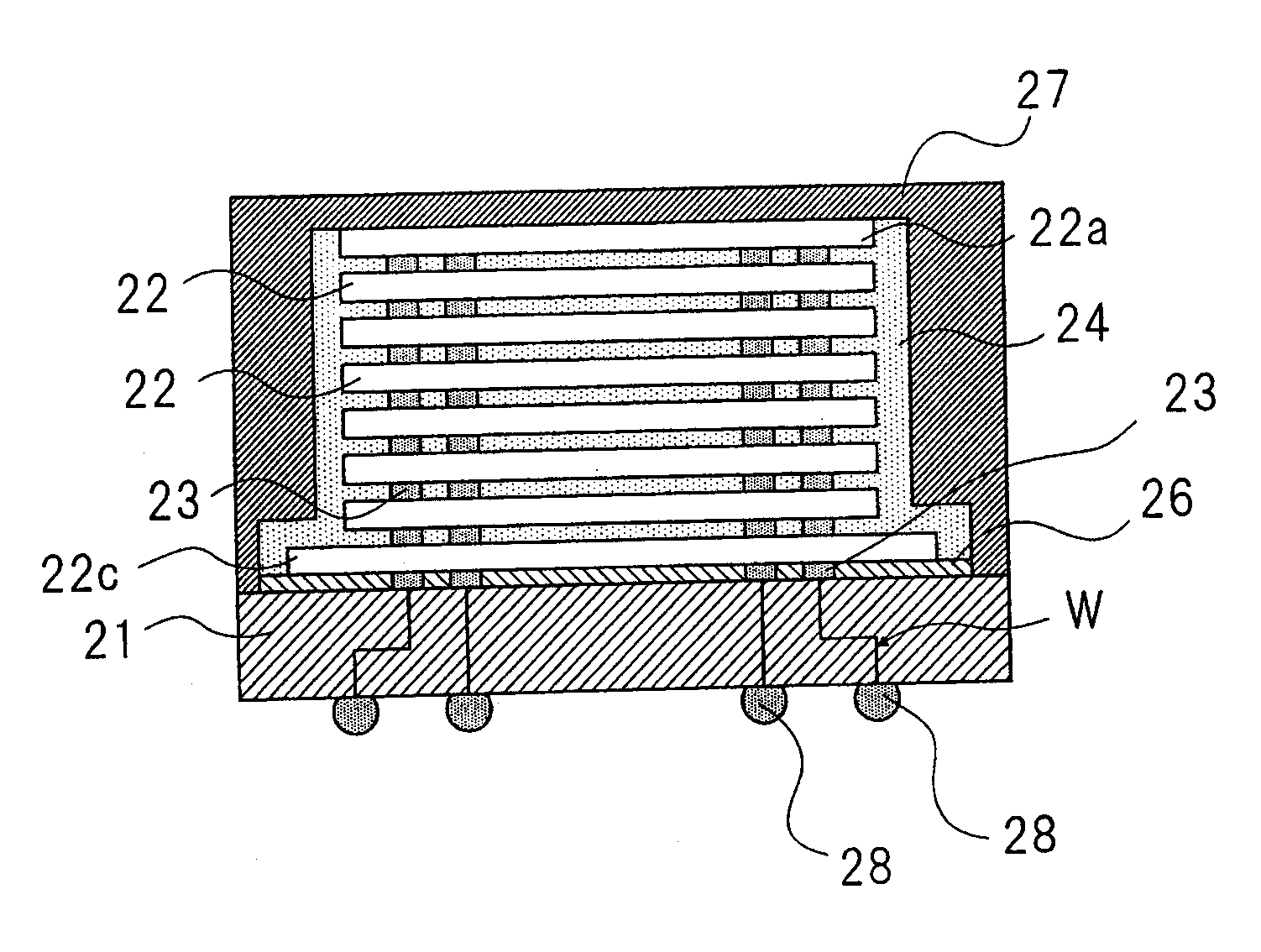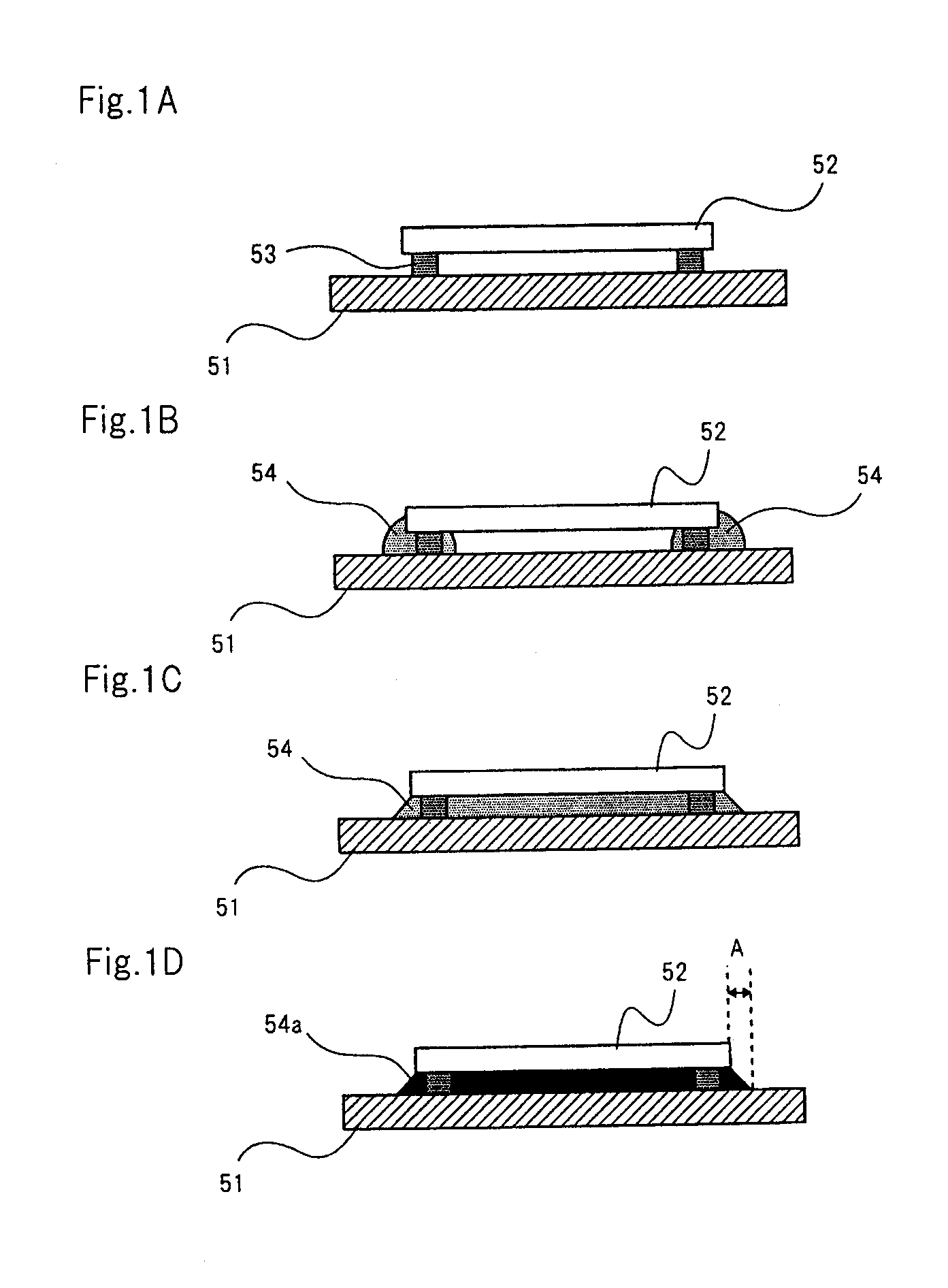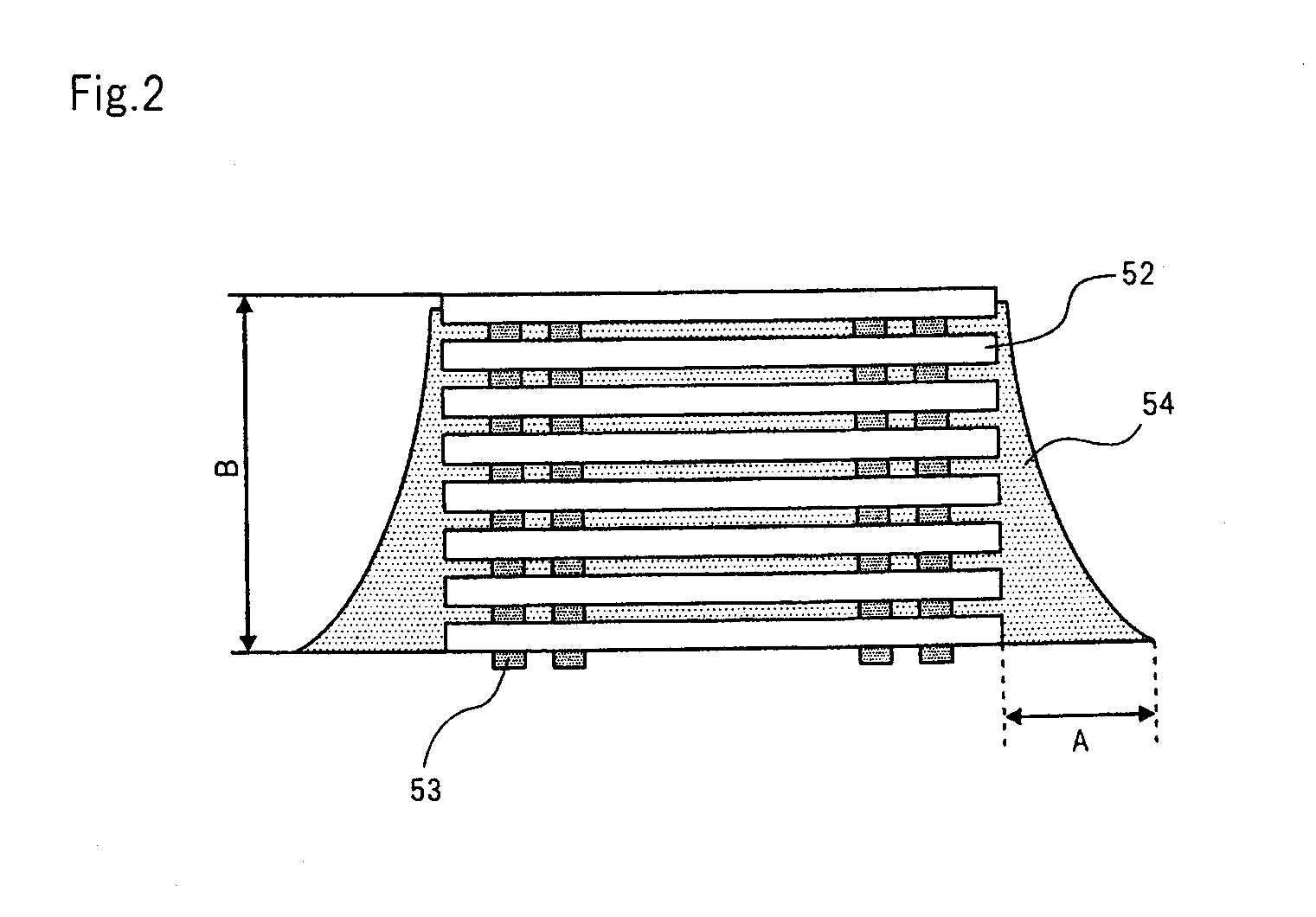Method of manufacturing semiconductor device
a manufacturing method and semiconductor technology, applied in semiconductor devices, semiconductor/solid-state device details, electrical devices, etc., can solve the problems of difficult to fabricate highly reliable semiconductor devices, reduce the size of the overall semiconductor device, and cracks in the filling material, so as to reduce the overflow width, prevent cavities, and improve the reliability of semiconductor devices
- Summary
- Abstract
- Description
- Claims
- Application Information
AI Technical Summary
Benefits of technology
Problems solved by technology
Method used
Image
Examples
first embodiment
In a method of manufacturing a semiconductor device according to this embodiment, a resin material is filled in the spaces between stacked semiconductor chips using a film deposition process in a supercritical state. Here, a supercritical state refers to a state in which the pressure and temperature to be applied to a substance are at and beyond a value (critical point) specific to this substance to cause the substance to have characteristics of both gas and liquid.
FIG. 3 shows a schematic diagram depicting a supercritical apparatus used for the method of manufacturing a semiconductor device according to the first embodiment. FIG. 4 shows a schematic plan view depicting heater 9 included in the high-pressure vessel of the supercritical apparatus.
As shown in FIG. 3, the supercritical apparatus used for the method of manufacturing a semiconductor device comprises high-pressure vessel 7 in which stacked unit 30 having a plurality of stacked semiconductor chips is placed as a processing...
second embodiment
Next, an exemplary structure in which the outside dimensions of semiconductor chips that are to be stacked are different will be described with reference to the drawings. FIG. 10 is a vertical cross sectional view depicting a stacked unit used in a method of manufacturing a semiconductor device according to a second embodiment. FIG. 11 is a vertical cross sectional view illustrative of the method of manufacturing a semiconductor device according to the second embodiment. FIG. 12 is a vertical cross sectional view depicting a semiconductor device fabricated by the method of manufacturing a semiconductor device according to the second embodiment. In addition, in the second embodiment, the same components as those in the first embodiment are designated the same numerals and signs that are in the first embodiment, and the description is omitted.
As shown in FIG. 10, stacked unit 31 is prepared, in which only the outside dimensions of lowermost semiconductor chip 22c are greater than the ...
PUM
 Login to View More
Login to View More Abstract
Description
Claims
Application Information
 Login to View More
Login to View More - R&D
- Intellectual Property
- Life Sciences
- Materials
- Tech Scout
- Unparalleled Data Quality
- Higher Quality Content
- 60% Fewer Hallucinations
Browse by: Latest US Patents, China's latest patents, Technical Efficacy Thesaurus, Application Domain, Technology Topic, Popular Technical Reports.
© 2025 PatSnap. All rights reserved.Legal|Privacy policy|Modern Slavery Act Transparency Statement|Sitemap|About US| Contact US: help@patsnap.com



